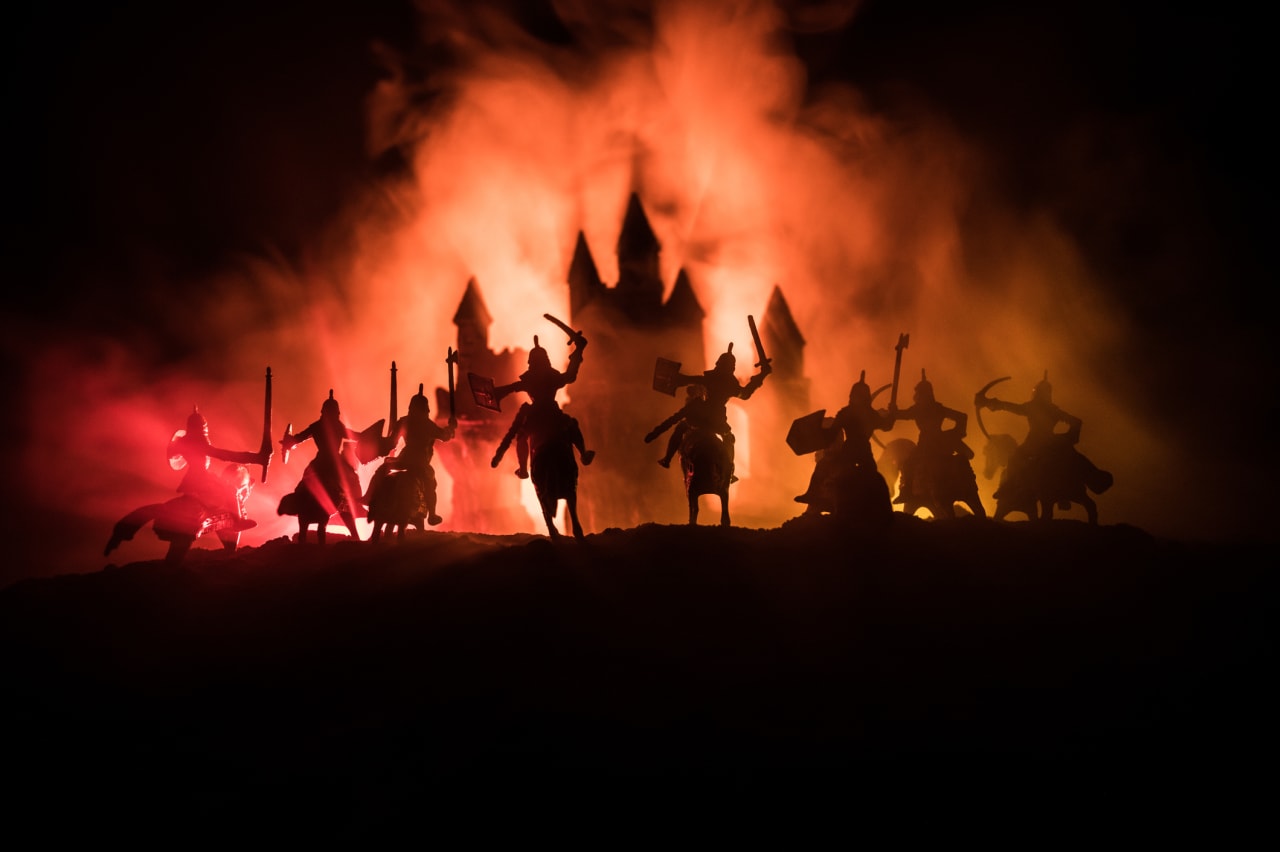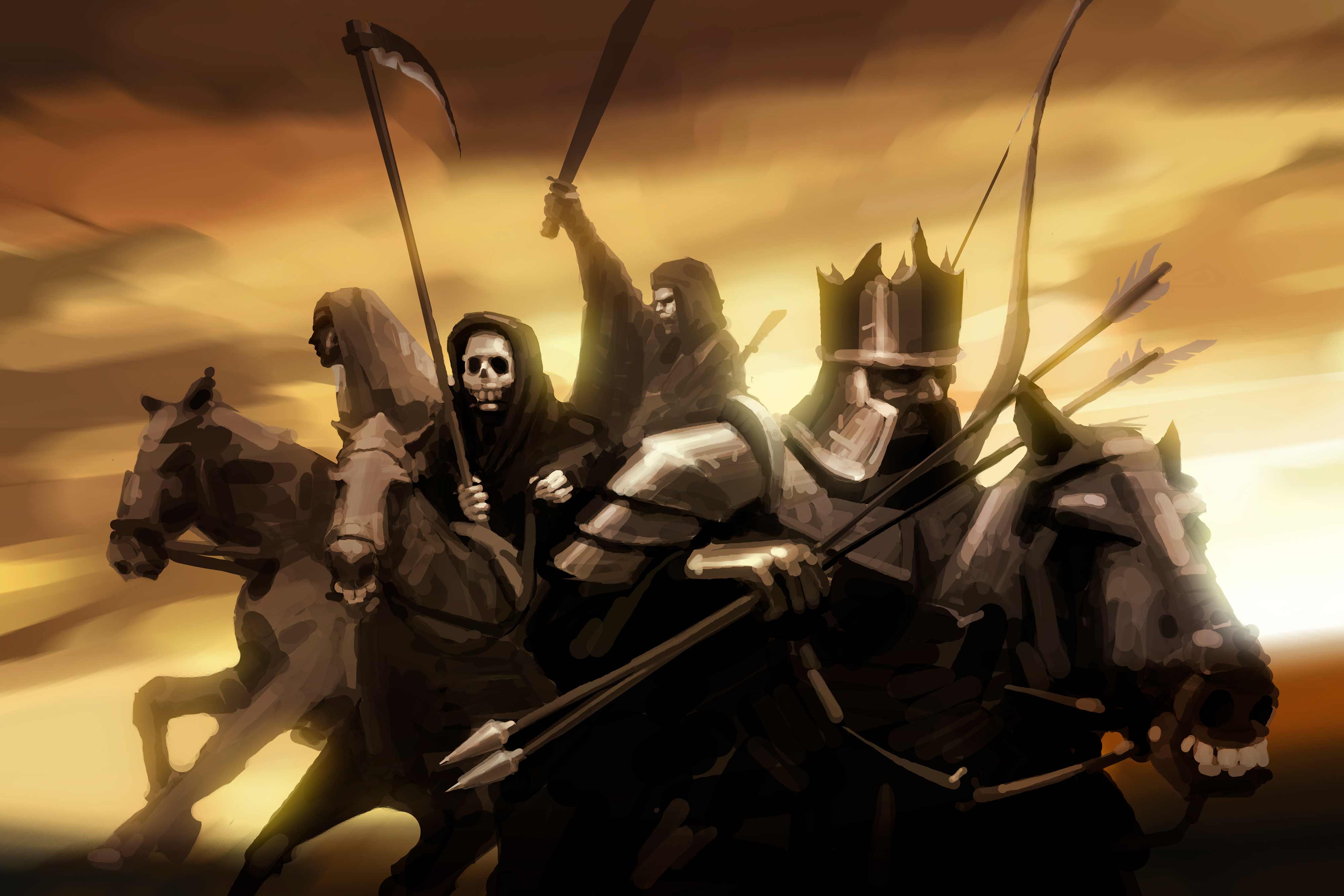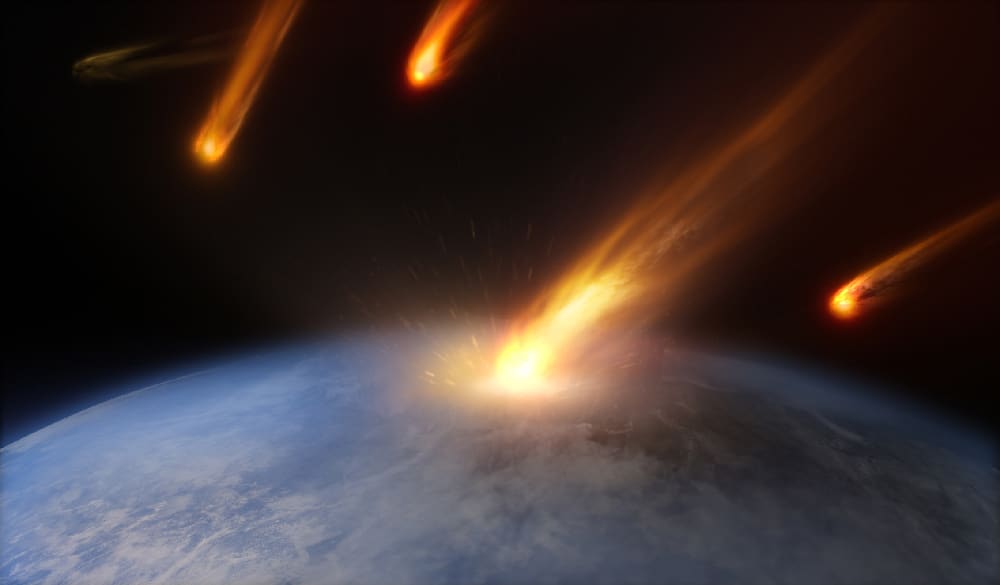Who were Gog and Magog in the Bible?

Gog and Magog
Gog and Magog are mentioned in four books of the Bible—Genesis, 1 Chronicles, and Ezekiel in the Old Testament and the book of Revelation in the New Testament.
They have become linked in our minds so that we usually think of them together as an inseparable pair—or at least individuals who lived at the same time. But a careful look at the verses in which they appear indicates otherwise. Let’s see what the Bible actually says about them.
Browse article contents:
Gog and Magog in:
What Genesis says about Magog

Notice the heading does not say “What Genesis Says About Gog and Magog.” That’s because Genesis doesn’t say anything about Gog. Genesis simply says Noah had a grandson named Magog:
“Now this is the genealogy of the sons of Noah: Shem, Ham, and Japheth. And sons were born to them after the flood. The sons of Japheth were Gomer, Magog, Madai, Javan, Tubal, Meshech, and Tiras” (Genesis 10:1, 2).
So Magog was a real person, born after the flood to Noah’s son, Japheth.
What 1 Chronicles says about Gog and Magog
There is one reference each to Gog and Magog in 1 Chronicles. Magog appears in 1 Chronicles 1:5. This verse merely repeats Genesis 10:2 word-for-word. It tells us again that Magog was Japheth’s son and Noah’s grandson. And that is the last we hear of Magog in the book of 1 Chronicles.
Gog’s name appears a few chapters later in a detailed genealogy of Jacob’s sons—the forefathers of the twelve tribes of Israel. Listing the families of Reuben, 1 Chronicles 5:4 says, “The sons of Joel were Shemiah his son, Gog his son, Shimei his son. . . .” So, according to this verse, Gog was a grandson of someone named Joel, who was a descendant of Reuben, the son of Jacob.
Gog and Magog: hundreds of years apart
Now Jacob and his twelve sons lived a long time after the flood—centuries later, in fact (see Genesis 11). So Gog, a descendant of Reuben, would have been born even later. Therefore, Gog could not have been living at the same time as Noah’s grandson, Magog; they were separated by hundreds of years. So how did the two become linked in our minds—and in other Bible verses?
What Ezekiel says about Gog and Magog

Chapters 38 and 39 of Ezekiel refer to Gog several times but mention Magog only twice. God told the prophet Ezekiel: “Son of man, set your face against Gog, of the land of Magog, the prince of Rosh, Meshech, and Tubal, and prophesy against him, and say, ‘Thus says the Lord God: “Behold I am against you, O Gog” ’ ” (Ezekiel 38:2, 3).
The prophecy went on to say of Gog:
“You will come up from your place out of the far north, you and many peoples with you, all of them riding on horses, a great company and a mighty army. You will come up against My people Israel like a cloud, to cover the land. It will be in the latter days” (Ezekiel 38:15, 16).
God also says that He will bring Gog “to judgment with pestilence and bloodshed” for his attacks against God’s people (verse 22).
The next chapter, Ezekiel 39 continues to describe the destruction that will come to Gog and his forces when they make war and attack Israel. Verse 6 mentions Magog again: “And I will send fire on Magog and on those who live in security in the coastlands. Then they shall know that I am the Lord.”
Prophecy during exile
Ezekiel lived during the time the Jews were carried captive to Babylon. He told his fellow Jewish captives that their exile in Babylon was God’s punishment for turning away from Him. But he assured them God would restore them when they repented and followed Him faithfully. He prophesied that Gog and his armies would attack a restored Israel, but that God would destroy Gog and preserve His people. Who was Ezekiel talking about—this “Gog of the land of Magog” (Ezekiel 28:2)?
Gog and Magog: nations or places?
The Babylonian exile, during which Ezekiel lived and prophesied, took place later—much, much later—than either Noah’s grandson, Magog, or Reuben’s descendant, Gog. So Ezekiel’s prophecies could not be referring to the actual persons mentioned in Genesis and 1 Chronicles.
In fact, a close look at the two verses in Ezekiel 38 and 39 that mention Magog suggests that they may not be referring to a person at all—but to a place or a nation. Ezekiel 38:2 refers to “the land of Magog,” and Ezekiel 39:6 says that God “will send fire on Magog and on those who live in security in the coastlands.”
There is no historical record of a war or Israel being attacked by the forces of a ruler named “Gog, of the land of Magog, the prince of Rosh, Meshech, and Tubal” (Ezekiel 38:2). But whoever or whatever Ezekiel may have been talking about, it’s clear that he is talking about a force that was opposed to God and His people—an enemy who would fight against Israel only to be destroyed, by God. And that’s what we also find in the last book of the Bible that mentions God and Magog.
What Revelation says about Gog and Magog

Revelation chapter 20 describes the final scene of Satan’s rebellion against God and His people.
“Now when the thousand years have expired, Satan will be released from his prison and will go out to deceive the nations which are in the four corners of the earth, Gog and Magog, to gather them together to battle, whose number is as the sand of the sea. They went up on the breadth of the earth and surrounded the camp of the saints and the beloved city. And fire came down from God out of heaven and devoured them” (Revelation 20:7-9).
This verse is the only verse in the Bible that actually mentions the phrase “Gog and Magog” together. This is where the two names are linked together in our minds. Elsewhere in the Bible, they are mentioned separately—except for Ezekiel 38:2, which refers to “Gog of the land of Magog.”
* One interesting point to note is that neither Ezekiel 38-39 nor Revelation 20 mentions a war or battle at Armageddon or Megiddo.
Similarities in Ezekiel and Revelation

The apostle John, who wrote Revelation, had Ezekiel’s description of God’s judgments on Gog and his armies in mind when he described the final destruction of Satan and his armies. Notice the similarities with Revelation 20:
- Both armies are vast and cover the earth (Ezekiel 38:9, 15, 16).
- Both go out to destroy God’s people (Ezekiel 38:10-12)
- Both are destroyed by fire and brimstone (Ezekiel 38:22).
- Both are destroyed at a time of final judgment “in the latter days” (Ezekiel 38:16).
Revelation 20:8 clearly identifies “Gog and Magog” as “the nations which are in the four corners of the earth”—in other words, everyone who follows Satan and war against God and His people in the latter days, at the end of time.
What does all this mean for us today?
In both Ezekiel’s prophecies and John’s description of the end of sin, Gog and Magog are symbols of the forces of Satan opposed to God and His people. They picture a battle and war between good and evil, sin and righteousness, God and Satan. And that is the main point in regards to Gog and Magog based on what the Bible says.
Conclusion
In the Bible, God wants to warn us of the terrible results of sin. He wants us to know that righteousness will triumph in the end. The enemies of God will be destroyed and sin will be ended forever. God is asking us to live each day in such a way that we are in “the camp of the saints” and not in the camp of Gog and Magog.